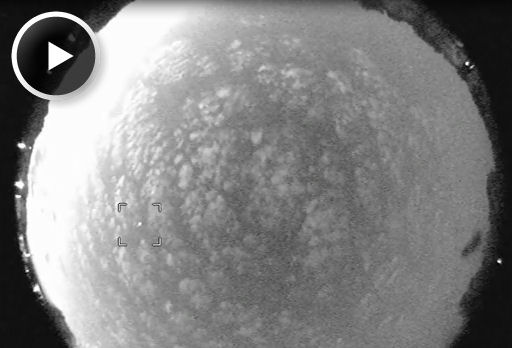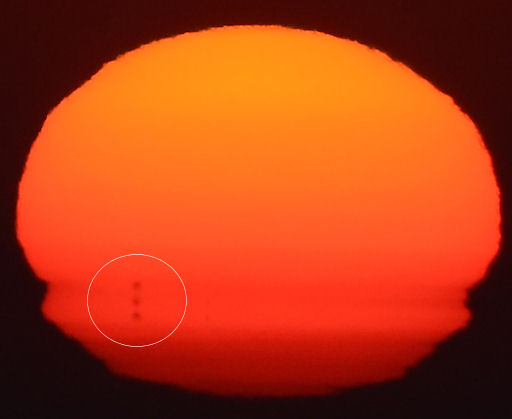![]()
QUIET SUN: Solar activity is low, with only a smattering of isolated C-flares occasionally breaking the quiet. NOAA: The chance of X-flares today is no more than 1%. Solar flare alerts: text, phone.
METEORS FROM HALLEY'S COMET: Earth is entering a stream of debris from Halley's Comet, source of the annual eta Aquarid meteor shower. Because the shower's radiant is located below the celestial equator, southern hemisphere observers are favored, but even northerners will be able to see at least a few flecks of Halley-dust disintegrating in the atmosphere when the shower peaks this weekend. The best time to look is during the hours before sunrise on Sunday, May 6th. Bright moonlight will cap the meteor rate at about 30 per hour.
In recent nights, NASA's all-sky meteor network has picked up a number of early eta Aquarid fireballs. This one was bright enough to shine through the glow of sunrise and clouds over Tullahoma, Tennessee, on April 29th:
According to analysts at NASA's Meteoroid Environment Office, this particular speck of comet dust hit the atmosphere traveling 62 km/s (139,000 mph) and disintegrated about 84 km (52 mi) above Earth's surface.
The full Moon of May 5-6, 2012, with interfere with the visibility of the eta Aquarid peak. Radar signals, however, penetrate moonlight with ease. Tune into Space Weather Radio for live echoes from eta Aquarids passing over the US Air Force Space Surveillance Radar in Texas.
SUNSPOT MIRAGE: Yesterday, May 1st, when the sun rose over Veszprem, Hungary, big sunspot AR1471 split into three pieces. "It was a mirage--the strongest I have ever seen!" says Monika Landy-Gyebnar, who photographed the apparition:
Landy-Gyebnar explains how she arranged this photo-op: "We had a nice, clear and windless morning. I set up my camera where I could see the sun rising over a cold valley where fog often collects; it is a location colder then its surroundings. I hoped the inversion layer at the valley would provide some distortion--and indeed it did. The image I saw when sun appeared was incredible!"
The entire event lasted no more than a few minutes, "but it seemed to be a century to me!" she says. A short animation of the mirage may be found here.

![]()
Solar wind
speed: 267.8 km/sec
density: 0.5 protons/cm3
explanation | more data
Updated: Today at 1636 UT
![]()
X-ray Solar Flares
6-hr max: C3 1139 UT May02
24-hr: C3 1139 UT May02
explanation | more data
Updated: Today at: 1600 UT
![]()
![]()
![]()
Daily Sun: 02 May 12
![]()
![]()
Solar activity is low. None of these sunspots is actively flaring. Credit: SDO/HMI
![]()
![]()
![]()
Sunspot number: 99
What is the sunspot number?
Updated 01 May 2012
Spotless Days
Current Stretch: 0 days
2012 total: 0 days (0%)
2011 total: 2 days (<1%)
2010 total: 51 days (14%)
2009 total: 260 days (71%)
Since 2004: 821 days
Typical Solar Min: 486 days
Updated 01 May 2012
The Radio Sun
10.7 cm flux: 114 sfu
explanation | more data
Updated 01 May 2012
![]()
![]()
![]()
Current Auroral Oval:
![]()
Switch to: Europe, USA, New Zealand, Antarctica
Credit: NOAA/POES
![]()
![]()
![]()
Planetary K-index
Now: Kp= 1 quiet
24-hr max: Kp= 2 quiet
explanation | more data
![]()
Interplanetary Mag. Field
Btotal: 4.5 nT
Bz: 2.5 nT south
explanation | more data
Updated: Today at 1635 UT
![]()
![]()
![]()
Coronal Holes: 02 May 12
![]()
![]()
There are no coronal holes on the Earthside of the sun. Credit: SDO/AIA.







